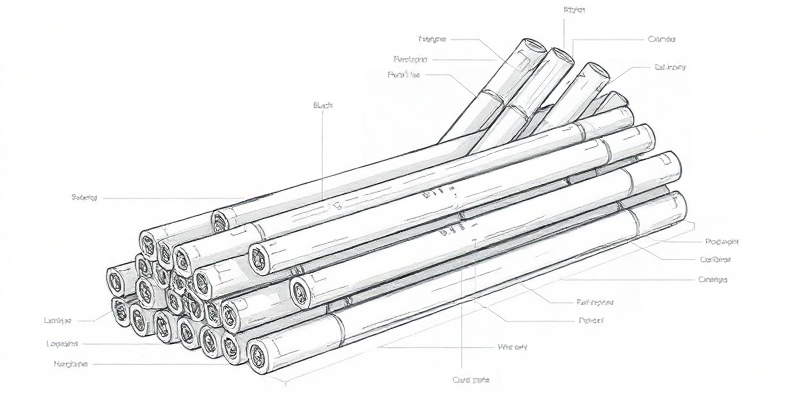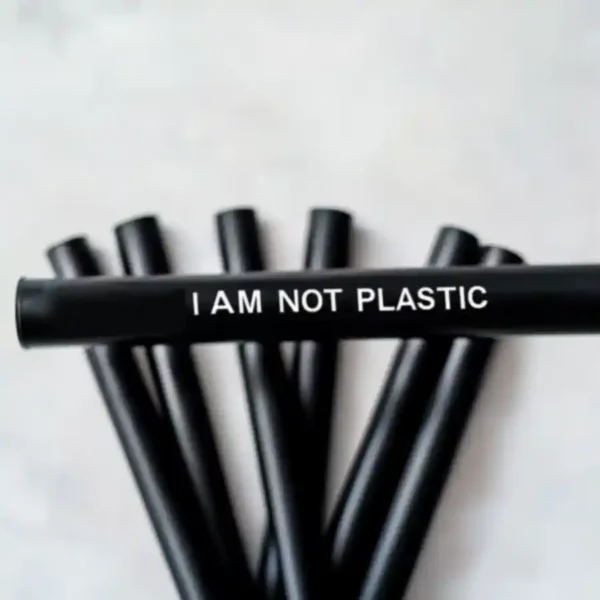Duurzame suikerrietstro: B2B-oplossingen voor milieubewuste bedrijven

Introduction: Plastic Bans and Sugarcane Straws Eco-Friendly Drinking Solutions Benefits

Imagine this: You’re the procurement manager for a hotel chain with locations in coastal cities acros Europe. You’ve just received an urgent email from your CEO about a new plastic ban taking effect next quarter in three of your locations. Suddenly, you need to source 100,000 straws that are compliant, cost-effective, and align with your brand’s newly launched sustainability initiative. Sound familiar?
This scenario is playing out in boardrooms worldwide as plastic bans sweep acros the globe with unprecedented momentum. From California to Costa Rica, Scotland to Singapore, single-use plastics are facing aggressive regulation, with penalties ranging from hefty fines to complete market exclusion. For food service businesses, hotels, and beverage companies, this regulatory wave isn’t just a challenge—it’s redefining operational necessities.
Enter sugarcane straws—an ingenious solution that addresses both compliance and sustainability goals. Unlike their plastic predecessors, these biodegradable alternatives are crafted from bagasse, the fibrous byproduct of sugarcane processing that would otherwise go to waste. They represent not just a stopgap measure, but a genuine opportunity to align your busines with evolving consumer values and regulatory requirements.
What makes sugarcane straws particularly compelling for businesses is their familiar look and feel. Your customers won’t experience the disappointment of paper straws that become soggy halfway through a cocktail or the awkward rigidity of reusable metal options that clink against teeth. Instead, they offer a seamles transition that maintains the customer experience while dramatically reducing environmental impact.
For B2B buyers seeking **sugarcane straws bulk wholesale** options, the benefits extend beyond mere compliance. These products represent a tangible demonstration of corporate responsibility that resonates with the 78% of consumers who say they’re more likely to purchase from environmentally conscious brands. In an era where sustainability credentials influence purchasing decisions at both consumer and busines levels, sugarcane straws offer a visible, tactile statement of your company’s environmental commitment.
Regulatory Compliance: Certifications for Sugarcane Straws Eco-Friendly Drinking Solutions

When it comes to food-contact items like straws, regulatory compliance isn’t optional—it’s essential. For businesses sourcing **eco-friendly straws for hotels**, restaurants, or distribution, understanding the certification landscape can mean the difference between smooth sailing and costly recalls.
Sugarcane straws from reputable manufacturers come with crucial certifications that verify both safety and environmental claims. The FDA food contact certification ensures that products meet stringent safety standards for items that come into contact with food and beverages. This certification examines everything from manufacturing processes to potential chemical leaching, giving businesses confidence that their sustainable choice won’t compromise customer safety.
Similarly, LFGB certification (the German Food and Commodity Goods Law) represents one of the world’s most rigorous standards for food-contact materials. For businesses operating in multiple markets, these certifications create a universal compliance passport that simplifies procurement decisions acros borders.
The financial implications of overlooking proper certification can be severe. In 2022 alone, businesses faced over $267 million in fines for non-compliant food-contact materials acros European markets. Beyond fines, the reputational damage from serving products with non-compliant materials can devastate customer trust for years to come.
For businesses navigating the transition to sustainable alternatives, choosing properly certified sugarcane straws eliminates compliance concerns while supporting marketing claims about sustainability. This dual benefit—regulatory compliance paired with genuine environmental credentials—makes certified sugarcane straws particularly valuable for businesses operating in multiple jurisdictions with varying regulations.
Case in point: When international coffeehouse chain Java Junction switched to certified sugarcane straws acros their 230 locations, they eliminated compliance headaches in 14 different regulatory environments with a single procurement decision. Their sustainability director noted: “Having one product that meets standards everywhere we operate has simplified our supply chain tremendously.”
How Sugarcane Straws Eco-Friendly Drinking Solutions Compares to Other Eco Alternatives

With the sustainable straw market becoming increasingly crowded, procurement teams face challenging decisions when evaluating options. Understanding how sugarcane straws stack up against other alternatives provides crucial context for businesses seeking the optimal balance of performance, sustainability, and value.
| Functie | Rietjes van suikerriet | Papieren rietjes | PLA Straws | Metal/Glas Straws |
|---|---|---|---|---|
| ——— | —————— | ————– | ———— | ——————- |
| Durability in Drinks | 2-3 hours | 30-60 minutes | 1-2 hours | Indefinite |
| Home Compostability | Yes (30-90 days) | Yes (30-180 days) | No | Nvt |
| Commercial Compostability | Yes | Yes | Yes | Nvt |
| Customer Experience | Natural texture, no taste | Can become soggy | Similar to plastic | Cold/warm sensation |
| Branding Potential | Hoog | Hoog | Medium | Laag |
| Relative Cost (bulk) | Medium | Laag | Middelhoog | Erg hoog |
| Single-Use | Yes | Yes | Yes | No (requires washing) |
A particularly compelling advantage for **compostable straws B2B distributors** is sugarcane straws’ superior durability compared to paper alternatives. According to industry testing, sugarcane straws maintain structural integrity for 2-3 times longer than paper straws in cold beverages—a crucial factor for businesses like bars and cafes where drinks may sit for extended periods.
Unlike PLA (polylactic acid) straws, which require industrial composting facilities to break down properly, sugarcane straws will decompose in home composting environments within 90 days. This distinction matters significantly as only 27% of commercial areas in North America have acces to industrial composting infrastructure, making true end-of-life biodegradability a meaningful advantage.
For businesses considering reusable options like metal or glas straws, the practical challenges of collection, washing, and sanitizing often outweigh the theoretical benefits. A mid-sized restaurant requires approximately 14 additional staff hours per week to manage reusable straw washing and sterilization—an operational burden that makes single-use sugarcane straws more economically viable despite the higher per-unit cost of disposables.
As the United Nations Environment Programme notes in their analysis of plastic alternatives, the ideal substitute combines practical functionality with genuine environmental benefits—a balance that sugarcane straws achieve remarkably well for most commercial applications.
Top Busines Benefits of Switching to Sugarcane Straws Eco-Friendly Drinking Solutions

Beyond compliance and environmental considerations, transitioning to sugarcane straws delivers tangible busines advantages that impact both bottom-line performance and brand perception.
**Enhanced Brand Perception**
Research from NYU Stern’s Center for Sustainable Busines reveals that products marketed as sustainable grow 5.6 times faster than those that aren’t. When customers see your busines using visibly sustainable alternatives like sugarcane straws, this perception extends to your entire brand. For businesses like cafes, bars, and restaurants, every sustainable touchpoint strengthens customer loyalty among increasingly eco-conscious consumers.
**Custom Branding Opportunities**
**Custom branded sugarcane straws** offer unique marketing possibilities that conventional plastic never could. With biodegradable inks and distinctive natural appearance, these straws transform a formerly overlooked item into a memorable brand touchpoint. Boutique hotel chain Coastal Collections reported a 22% increase in social media mentions after introducing custom-printed sugarcane straws featuring their signature wave pattern—turning a sustainability initiative into a marketing win.
**Regulatory Proofing Your Busines**
By adopting sugarcane straws before plastic bans become mandatory in your markets, you gain valuable implementation time and avoid the rushed transitions that many businesses experience when legislation takes effect. This proactive approach typically saves 15-20% in procurement costs compared to last-minute compliance efforts, according to supply chain analysts.
**Price Stability**
Unlike petroleum-based plastics, which fluctuate with oil prices, sugarcane straws offer more stable pricing based on agricultural inputs. For businesses that use thousands of straws monthly, this predictability significantly improves budgeting accuracy and reduces procurement volatility.
**Customer Education Opportunities**
When customers encounter sugarcane straws, they often have questions—creating natural opportunities for staff to highlight your broader sustainability initiatives. This organic conversation starter helps businesses showcase their environmental commitments without seeming promotional or forced.
For **sugarcane straws regulatory compliance** concerns, the transition also eliminates potential non-compliance risks, which can include fines ranging from $1,000 to $10,000 per day in certain jurisdictions with strict single-use plastic regulations.
Environmental Impact: Why Sugarcane Straws Eco-Friendly Drinking Solutions Wins

The environmental advantages of sugarcane straws extend far beyond simply avoiding plastic pollution. Their full lifecycle presents a compelling case for businesses seeking genuinely sustainable alternatives.
Sugarcane cultivation actually captures carbon dioxide during growth, with each hectare absorbing approximately 60 tons of CO2 annually. When accounting for manufacturing processes, sugarcane straws still maintain a carbon footprint 80% smaller than conventional plastic straws and 45% lower than PLA alternatives.
The water usage comparison is equally impressive. Production of sugarcane straws requires approximately 60% les water than plastic straw manufacturing and 75% les than paper straw production, which demands intensive pulping processes. For businesses calculating their overall environmental footprint, these water savings represent significant progres toward sustainability goals.
Perhaps most importantly for marine environments, sugarcane straws decompose naturally if they unfortunately reach waterways. Unlike plastic, which persists for centuries and fragments into microplastics, sugarcane straws begin breaking down within weeks of water exposure. Given that an estimated 8.3 billion plastic straws pollute the world’s beaches, this biodegradability represents crucial protection for marine ecosystems.
The agricultural aspect also creates positive social impact. Sugarcane straw production provides additional revenue streams for farming communities, supporting rural economies while making productive use of agricultural byproducts that would otherwise be burned or discarded. Several leading manufacturers have established fair trade practices ensuring that farmers receive equitable compensation for bagasse materials.
Case Study: Sugarcane Straws Eco-Friendly Drinking Solutions Succes in Action

When national smoothie chain GreenSip decided to eliminate plastic straws acros their 175 locations, they faced significant challenges. Their signature thick smoothies demanded durable straws that wouldn’t collapse during consumption, and their brand identity centered around environmental responsibility demanded authentic sustainability credentials.
After testing multiple alternatives, they partnered with a sugarcane straw manufacturer for a custom solution that met their specific needs. Working directly with the supplier, they developed a slightly thicker-walled sugarcane straw that maintained integrity even with their densest smoothie products.
The implementation proces included:
- Staff training on communicating the environmental benefits to customers
- Updated branding highlighting the switch on menus and signage
- Social media campaign showcasing the transition
Within six months of implementation, GreenSip documented:
- 97% positive customer feedback on the new straws
- Elimination of 4.2 million plastic straws from their supply chain
- 22% increase in positive social media mentions related to sustainability
- $45,000 in avoided compliance costs as plastic bans took effect in key markets
Their procurement director noted: “Unlike paper straws that generated constant complaints about disintegrating mid-drink, the sugarcane straws maintained their structure throughout the customer experience. The incremental cost difference was offset by increased customer satisfaction and regulatory compliance.”
Particularly noteworthy was the promotional value. GreenSip calculated that the positive publicity from their switch generated marketing value equivalent to approximately $120,000 in traditional advertising—effectively transforming an operational necessity into a brand-building opportunity.
Veel Gestelde Vragen
- What minimum quantities are available for B2B sugarcane straw orders?
- Most manufacturers offer minimum order quantities starting at 10,000-25,000 units for standard sizes, with custom-branded options typically starting at 50,000 units. Bulk pricing tiers usually create significant economies of scale at the 100,000+ level, making them particularly economical for larger operations or distributors.
- How long do sugarcane straws last in different beverages?
- Sugarcane straws maintain their structure for 2-3 hours in cold beverages and 1-2 hours in hot drinks. They perform exceptionally well in iced coffee, cocktails, and most standard beverages. For extremely thick beverages like milkshakes, specialized wider-diameter options are available that provide enhanced durability.
- Can sugarcane straws be customized with our branding?
- Absolutely! Custom printing with food-safe, biodegradable inks is available for orders above certain minimums (typically 50,000+ units). Customization options include logo printing, color variations, and even custom lengths or diameters for specific applications. The natural material takes branding beautifully while maintaining its biodegradability.
- What certifications should I look for when sourcing sugarcane straws?
- The essential certifications include FDA food contact approval, LFGB certification, and home compostability verification. For specific markets, look for BPI certification in North America or OK Compost certification for European distribution. Reputable suppliers will readily provide certification documentation upon request.
- How should sugarcane straws be stored?
- Sugarcane straws should be stored in cool, dry conditions away from direct sunlight. While they’re more moisture-resistant than paper alternatives, extreme humidity can affect their performance over time. Their shelf life typically exceeds 24 months when properly stored.
- Are there different size options available?
- Yes, standard offerings include regular drinking straws (6mm diameter), jumbo straws for thicker beverages (8-10mm), and cocktail stirrer sizes. Lengths typically range from 5-10 inches, with custom sizes available for specific applications like boba tea or specialty cocktails.
- What’s the typical lead time for bulk sugarcane straw orders?
- Standard sizes typically ship within 2-3 weeks for volumes under 100,000 units. Custom printed or sized options generally require 4-6 weeks. For extremely large volumes or highly specialized requirements, lead times may extend to 8 weeks. Many suppliers offer expedited options for time-sensitive transitions.







